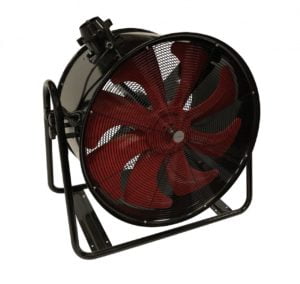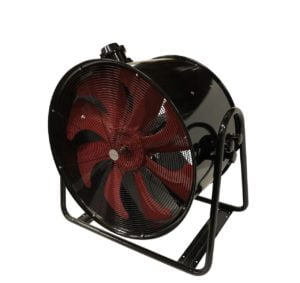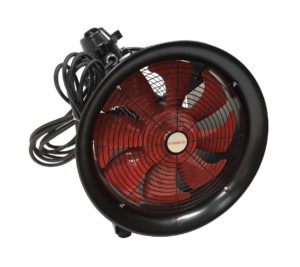Class 1 Division 2 Fan
Showing all 4 resultsSorted by popularity
-
%22%20transform%3D%22translate(.6%20.6)%20scale(1.17188)%22%20fill-opacity%3D%22.5%22%3E%3Cellipse%20rx%3D%221%22%20ry%3D%221%22%20transform%3D%22matrix(-73.26441%2041.11407%20-38.18907%20-68.05212%20130%20105)%22%2F%3E%3Cellipse%20fill%3D%22%23fff%22%20rx%3D%221%22%20ry%3D%221%22%20transform%3D%22matrix(-253.8683%2023.99762%20-3.28395%20-34.74057%20147%20220)%22%2F%3E%3Cellipse%20fill%3D%22%23fff%22%20cx%3D%2218%22%20cy%3D%2280%22%20rx%3D%2223%22%20ry%3D%22255%22%2F%3E%3Cellipse%20fill%3D%22%23fff%22%20rx%3D%221%22%20ry%3D%221%22%20transform%3D%22rotate(-.3%2019853.7%20-38271.2)%20scale(29.1301%20255.00004)%22%2F%3E%3C%2Fg%3E%3C%2Fsvg%3E)
Atlantic Blowers ABAF-20-110E Explosion Proof Fan
$1,75599 -
%27%20fill-opacity%3D%27.5%27%3E%3Cellipse%20fill-opacity%3D%22.5%22%20rx%3D%221%22%20ry%3D%221%22%20transform%3D%22matrix(-73.1352%20-77.72155%2070.39738%20-66.24322%20143.5%20156.5)%22%2F%3E%3Cellipse%20fill%3D%22%23fff%22%20fill-opacity%3D%22.5%22%20rx%3D%221%22%20ry%3D%221%22%20transform%3D%22rotate(-94.8%20182%20-72.6)%20scale(299.44928%2042.14891)%22%2F%3E%3Cellipse%20fill%3D%22%23fff%22%20fill-opacity%3D%22.5%22%20rx%3D%221%22%20ry%3D%221%22%20transform%3D%22matrix(-296.23689%20-43.74446%205.6732%20-38.41887%2094.3%20279.3)%22%2F%3E%3Cpath%20fill%3D%22%23fff%22%20fill-opacity%3D%22.5%22%20d%3D%22M-18.3%2077.5L3-18.3%20319%203z%22%2F%3E%3C%2Fg%3E%3C%2Fsvg%3E)
Explosion Proof Fan Atlantic Blowers ABAF-8-110E
$47508 -
%27%20fill-opacity%3D%27.5%27%3E%3Cellipse%20fill-opacity%3D%22.5%22%20rx%3D%221%22%20ry%3D%221%22%20transform%3D%22rotate(33.4%20-165.4%20300)%20scale(89.76593%2087.41985)%22%2F%3E%3Cellipse%20fill%3D%22%23fff%22%20fill-opacity%3D%22.5%22%20rx%3D%221%22%20ry%3D%221%22%20transform%3D%22rotate(177.9%20136.4%2072.6)%20scale(43.67494%20298.82809)%22%2F%3E%3Cellipse%20fill%3D%22%23fff%22%20fill-opacity%3D%22.5%22%20rx%3D%221%22%20ry%3D%221%22%20transform%3D%22rotate(84.5%20-77.8%2094.2)%20scale(298.82813%2036.88197)%22%2F%3E%3Cellipse%20fill%3D%22%23fff%22%20fill-opacity%3D%22.5%22%20rx%3D%221%22%20ry%3D%221%22%20transform%3D%22matrix(-2.84433%2037.4494%20-297.96993%20-22.63118%20128.4%207)%22%2F%3E%3C%2Fg%3E%3C%2Fsvg%3E)
Explosion Proof Fan Atlantic Blowers ABAF-24-110E
$2,73571 -
%22%20transform%3D%22translate(.6%20.6)%20scale(1.17188)%22%20fill-opacity%3D%22.5%22%3E%3Cellipse%20fill%3D%22%231d0000%22%20rx%3D%221%22%20ry%3D%221%22%20transform%3D%22matrix(-80.66339%20-21.146%2019.0918%20-72.82741%20132.1%20109.1)%22%2F%3E%3Cellipse%20fill%3D%22%23fff%22%20rx%3D%221%22%20ry%3D%221%22%20transform%3D%22matrix(-32.53772%20-247.14854%2039.50404%20-5.2008%2025.3%20138.1)%22%2F%3E%3Cellipse%20fill%3D%22%23fff%22%20rx%3D%221%22%20ry%3D%221%22%20transform%3D%22matrix(-30.38957%20-3.10647%2025.93141%20-253.67807%20235.2%20146)%22%2F%3E%3Cellipse%20fill%3D%22%23fff%22%20cx%3D%22129%22%20cy%3D%2212%22%20rx%3D%22255%22%20ry%3D%2215%22%2F%3E%3C%2Fg%3E%3C%2Fsvg%3E)
Explosion Proof Fan Atlantic Blowers ABAF-16-220E
$1,15815
- Class 1 Division 2 fans are essential for hazardous environments, offering advanced safety features to prevent ignition of flammable substances under abnormal conditions.
- Selecting and maintaining C1D2 equipment aligns with safety and operational excellence, demonstrating a commitment to employee well-being and risk management.
- The Intrinsically Safe Store provides comprehensive solutions and expert guidance, ensuring compliance with stringent safety standards and enhancing operational efficiency in high-risk industries.
Class 1 Division 2 Fan
In the volatile atmospheres of Oil & Gas, Chemical, and Pharmaceutical industries, ensuring a safe working environment is not just a regulatory requirement, it’s a moral imperative. At The Intrinsically Safe Store, we understand the critical need for equipment that not only meets but exceeds safety standards. This commitment to safety, operational excellence, and personal development is at the heart of everything we offer, including the Class 1 Division 2 fan. Designed for hazardous environments where safety cannot be compromised, our Class 1 Division 2 fans embody our motto, “Making hazardous environments safer, one solution at a time.”
For businesses operating within these high-risk conditions, choosing the right equipment is not just a matter of compliance; it’s a foundational aspect of your operational integrity and the well-being of your personnel. The Class 1 Division 2 fan is a testament to our unwavering commitment to providing certified safety, leveraging our expert knowledge, and ensuring that our comprehensive selection serves the multifaceted needs of our valued B2B customers. With our finger on the pulse of advancements in safety technology, we are dedicated to supporting your operations through exceptional products and guidance, fostering a culture of safety and reliability that mirrors our own internal values of continual improvement and transparent, efficient processes.
Combining our ingrained focus on safely navigating hazardous environments with our extensive experience in providing top-tier safety solutions, The Intrinsically Safe Store is proud to offer the Class 1 Division 2 fan. This fan is not merely an apparatus for air circulation; it’s a crucial component of your safety infrastructure, meticulously engineered to operate reliably in the challenging conditions that define your industry. Our dedication to not only meeting but exceeding safety standards, equipping you with expert knowledge, and providing a comprehensive selection of certified safe products, underscores our promise to you: to be a partner in making your operations safer, smarter, and more efficient, one solution at a time.
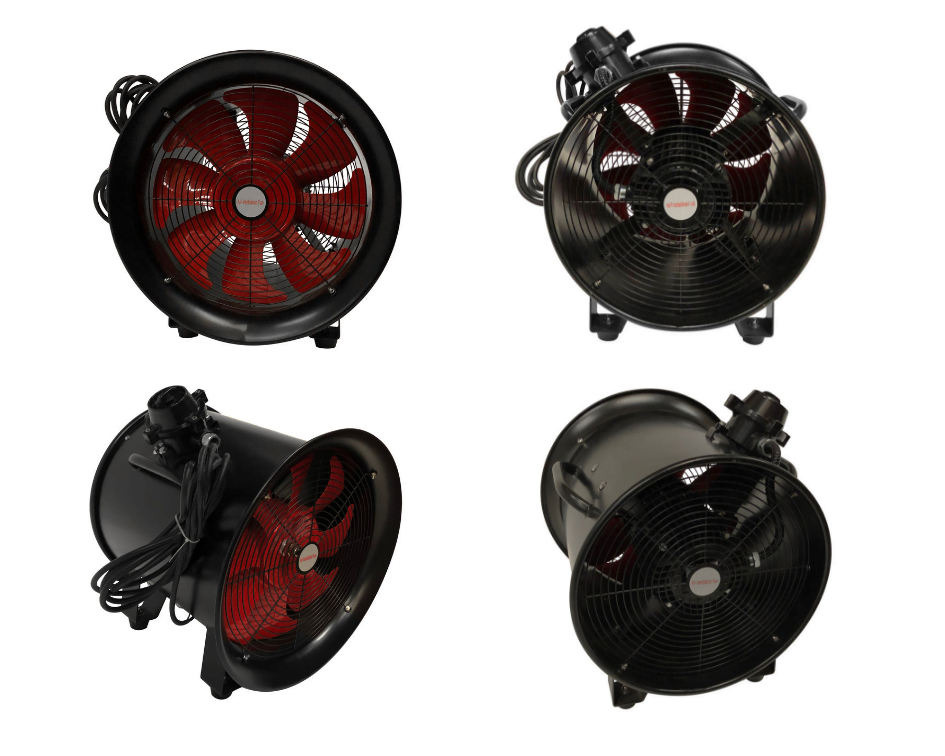
Understanding Class 1 Division 2 Safety Standards
When it comes to creating a safe working environment in hazardous areas, understanding and adhering to the right safety standards is paramount. The Class 1 Division 2 (C1D2) safety standard is a critical consideration for industries operating in potentially explosive atmospheres, such as Oil & Gas, Chemical, and Pharmaceutical sectors. This classification specifically pertains to areas where flammable gases, vapors, or liquids are present under abnormal conditions – such as in the case of a leak or spill.
What Does Class 1 Division 2 Mean?
The National Electric Code (NEC) in the United States, along with other international safety standards, defines Class 1 locations as those in which flammable gases or vapors are present in the air in quantities sufficient to produce explosive or ignitable mixtures. Division 2 specifies that the hazardous material is present only under abnormal conditions (leaks, spills, etc.). Therefore, equipment designed for C1D2 environments is built to prevent ignition in these less frequently hazardous situations.
The Importance of C1D2 Certification
For a fan or any other electrical equipment to be categorized under C1D2, it must pass rigorous testing to prove it won’t cause an ignition in an explosive environment under abnormal conditions. This involves design considerations like sealing mechanisms to prevent the ingress of flammable substances, and temperature controls to ensure the surface temperature of the equipment never reaches a point where it could ignite gases or vapors.
The certification signifies that the product is suitable for use in specific hazardous environments, providing peace of mind that safety protocols are achieved and maintained. For companies operating in these sectors, choosing C1D2 certified equipment isn’t just a matter of compliance; it’s a core component of operational excellence and risk management.
Operational Excellence and C1D2 Equipment
Selecting C1D2 certified fans and other equipment aligns with the principles of operational excellence. It demonstrates a commitment to not only meeting legal requirements but also prioritizing the safety and well-being of employees. At the Intrinsically Safe Store, we understand that our customers in the Oil & Gas, Chemical, and Pharmaceutical industries require products that not only enhance safety but also foster a culture of continuous improvement and personal development.
Incorporating C1D2 certified equipment into hazardous environments is one step toward achieving a workplace that values safety as a cornerstone of operational success. It underlines the importance of employing certified safety solutions that comply with stringent safety standards, embodying our motto of making hazardous environments safer, one solution at a time.
Exploring the Design of Class 1 Division 2 Fans
When it comes to operating in hazardous environments, safety is paramount. This is where the design and functionality of Class 1 Division 2 fans play a crucial role. Specifically engineered to meet the stringent requirements of Class 1, Division 2 hazardous locations, these fans are essential for maintaining clean and safe air in spaces where flammable gases, vapors, or liquids might be present in abnormal conditions.
Safety and Efficiency at the Core
The design of a Class 1 Division 2 fan is centered around safety and efficiency. These units are constructed with materials that resist corrosion, withstand extreme temperatures, and prevent the ignition of hazardous substances. Every component, from the motor to the blades, is carefully selected to ensure that it does not become a source of ignition.
Advanced Ventilation Solutions
Efficient airflow is another critical feature of these fans. They are crafted to deliver optimal ventilation, removing potentially hazardous gases and bringing in clean air to maintain a safe working environment. This function is essential for operational excellence in industries such as Oil & Gas, Chemical, and Pharmaceutical sectors, where air quality cannot be compromised.
Intrinsically Safe Design
A hallmark of the Class 1 Division 2 fans is their intrinsically safe design. This means that even in the event of a fault, these fans are incapable of causing ignition of a flammable gas or vapor. This intrinsic safety extends beyond the motor, encompassing electrical components and even the wiring, which are designed to eliminate sparks and overheating.
Tailored for Hazardous Industries
Understanding the unique needs of hazardous industries has led to the development of fans that not only meet safety standards but are also customizable. Whether it’s the size, airflow rate, or specific safety features, Class 1 Division 2 fans can be tailored to meet the precise requirements of a hazardous area. This level of customization ensures that industries have access to ventilation solutions that align with their safety protocols while enhancing operational efficiency.
In embracing the design innovations of Class 1 Division 2 fans, The Intrinsically Safe Store upholds its commitment to making hazardous environments safer. By offering a comprehensive selection of certified fans, the company ensures that industries operating in potentially dangerous conditions have access to products that support their operational excellence and dedication to safety. With expert knowledge and a focus on providing exceptional customer support, choosing the right Class 1 Division 2 fan becomes a seamless and reassuring process.
Technical Specifications of Class 1 Division 2 Fans
When choosing a Class 1 Division 2 fan for your operations, understanding the technical specifications is crucial to ensure safety and efficiency in hazardous environments. Here, we delve into the essential features and requirements that define these specialized fans, providing you with the knowledge needed to make an informed decision.
Hazardous Location Compliance
Class 1 Division 2 fans are certified for use in areas where flammable gases, vapors, or liquids may exist under abnormal conditions. Compliance with standards such as NEC (National Electrical Code), ATEX, or IECEx ensures these fans are safe for use in specified hazardous environments.
Construction Materials
The construction materials of these fans are selected to prevent ignition risks. Common materials include non-sparking aluminum or stainless steel, ensuring durability and resistance to corrosive substances typically found in chemical, oil & gas, and pharmaceutical industries.
Motor Enclosure
Motors in Class 1 Division 2 fans are enclosed to prevent any potential spark or heat from igniting flammable substances. These enclosures are typically rated T3, T4, or T6, indicating the maximum surface temperature the enclosure will reach, further minimizing the risk of ignition.
Airflow and Efficiency
Efficiency is key in operational excellence. Class 1 Division 2 fans boast high airflow capacities with energy-efficient designs, reducing operational costs while maintaining superior ventilation. Specifications include CFM (cubic feet per minute) ratings to match the ventilation requirements of various industrial applications.
Temperature and Pressure Ratings
These fans are built to operate under a wide range of temperatures and pressures, suitable for extreme conditions without compromising performance or safety. Temperature ratings ensure that the fans will function optimally in both high-heat and sub-zero environments, while pressure ratings guarantee safe operation during volatile chemical reactions.
Safety Features
Additional safety features might include vibration isolators, temperature sensors, and overload protection to further enhance the operational safety and longevity of the equipment. These features are paramount in maintaining a secure working environment and ensuring the well-being of personnel.
Compliance and Certifications
Every Class 1 Division 2 fan carries certifications that validate its suitability and safety for hazardous locations. It’s essential to verify that the fan you select meets the specific regulations and standards applicable in your industry and region.
Understanding the technical specifications of Class 1 Division 2 fans is pivotal in selecting the right equipment for your needs. The Intrinsically Safe Store’s commitment to operational excellence and safety ensures our selection of fans not only meets but exceeds industry standards. With our expert knowledge and comprehensive selection, we are dedicated to making hazardous environments safer, one solution at a time.
Installation Considerations for Class 1 Division 2 Fans
When integrating Class 1 Division 2 fans into hazardous environments, it is critical to prioritize both safety and operational excellence. These fans are specifically designed for use in areas where flammable gases, vapors, or liquified solids might be present under abnormal conditions. The installation of these devices requires meticulous planning and adherence to safety protocols to ensure the wellbeing of all on-site personnel and the efficient operation of equipment. Here are several key considerations to keep in mind during the installation process:
1. Understanding the Environment
Before installation, it is essential to fully understand the specific hazardous conditions of the environment where the Class 1 Division 2 fan will be operating. This includes identifying the types of flammable substances present and their classifications, as well as the typical operating conditions of the space. This knowledge ensures the fan selected is suitable for the specific hazards and conditions it will encounter.
2. Compliance with Regulations
Ensure that the installation complies with all relevant local, national, and industry-specific safety regulations and standards. This includes the National Electric Code (NEC) in the United States, which outlines requirements for electrical wiring and equipment in hazardous (classified) locations.
3. Professional Installation
Given the complexities associated with hazardous environments, it’s advisable to have Class 1 Division 2 fans installed by professionals with experience in hazardous area equipment. This ensures that the installation is carried out safely and in compliance with all regulations and standards.
4. Ventilation Planning
Adequate ventilation is crucial in hazardous environments to prevent the accumulation of flammable gases or vapors. When installing Class 1 Division 2 fans, it’s important to strategically position them to optimize airflow and effectively mitigate potential hazards. This may involve consulting with ventilation experts or using computational fluid dynamics (CFD) simulations to plan the most effective layout.
5. Regular Maintenance and Inspections
After installation, regular maintenance and inspections are critical to ensuring the long-term safety and functionality of Class 1 Division 2 fans. Establishing a routine maintenance schedule helps identify potential issues before they lead to hazardous situations or equipment failure.
6. Employee Training
Ensuring that employees who work near or with the Class 1 Division 2 fans are properly trained in their operation, maintenance, and safety procedures is crucial. This training should cover how to recognize signs of malfunction or deterioration in the fans that could compromise safety.
By carefully considering these aspects, companies in hazardous industries can enhance the safety and efficiency of their operations, aligning with The Intrinsically Safe Store’s commitment to operational excellence and a supportive work environment. Through meticulous installation and maintenance of Class 1 Division 2 fans, businesses can make hazardous environments safer, staying true to our motto: Making hazardous environments safer, one solution at a time.
Performance Comparisons with Non-Rated Fans
When examining the efficiency and safety of Class 1 Division 2 fans compared to non-rated fans in hazardous environments, several key differences become apparent. These disparities not only highlight the importance of choosing the right equipment for safety-critical areas but also underscore the superiority of Class 1 Division 2 fans in terms of performance and reliability under challenging conditions.
Enhanced Safety Features
Class 1 Division 2 fans are designed with safety at the forefront. These fans are constructed to operate safely in environments where flammable gases, vapors, or liquids might be present under abnormal conditions. This contrasts sharply with non-rated fans, which do not possess these intrinsic safety design features, potentially leading to catastrophic consequences when used in hazardous locations. Class 1 Division 2 fans incorporate spark-resistant materials, explosion-proof motors, and other safety mechanisms to mitigate the risk of ignition, ensuring operational integrity and protecting personnel and assets.
Superior Performance in Harsh Conditions
Operational excellence is a hallmark of Class 1 Division 2 fans. Engineered to withstand the rigors of hazardous environments, these fans maintain optimal performance even in the face of volatile chemicals, extreme temperatures, and other challenging conditions. Non-rated fans, conversely, may falter under such stress, resulting in decreased efficiency, increased maintenance costs, and potential operational downtime.
Compliance and Certification
A critical factor distinguishing Class 1 Division 2 fans from their non-rated counterparts is adherence to stringent regulatory standards. These fans undergo rigorous testing to meet national and international safety certifications, ensuring compliance with industry protocols and legal requirements. Use of non-rated fans in regulated hazardous areas not only poses a significant safety risk but also exposes companies to compliance violations and potential legal and financial repercussions.
Operational Longevity and Cost-Efficiency
From an investment perspective, Class 1 Division 2 fans offer significant advantages in terms of operational longevity and overall cost-efficiency. Designed for durability, these fans promise a longer operational lifespan, reducing the need for frequent replacements. Furthermore, by ensuring a safer working environment, these fans contribute to minimizing costly accidents and production stoppages, thereby enhancing operational efficiencies and protecting the company’s bottom line.
Conclusion
In summary, the performance comparison between Class 1 Division 2 fans and non-rated fans illustrates a clear preference for the former in hazardous environments. By prioritizing safety, compliance, and operational efficiency, Class 1 Division 2 fans represent a prudent investment for businesses operating in sectors where safety cannot be compromised. The Intrinsically Safe Store remains dedicated to providing products that embody these values, ensuring our clients can operate with confidence, knowing they are adhering to the highest standards of safety and operational excellence.
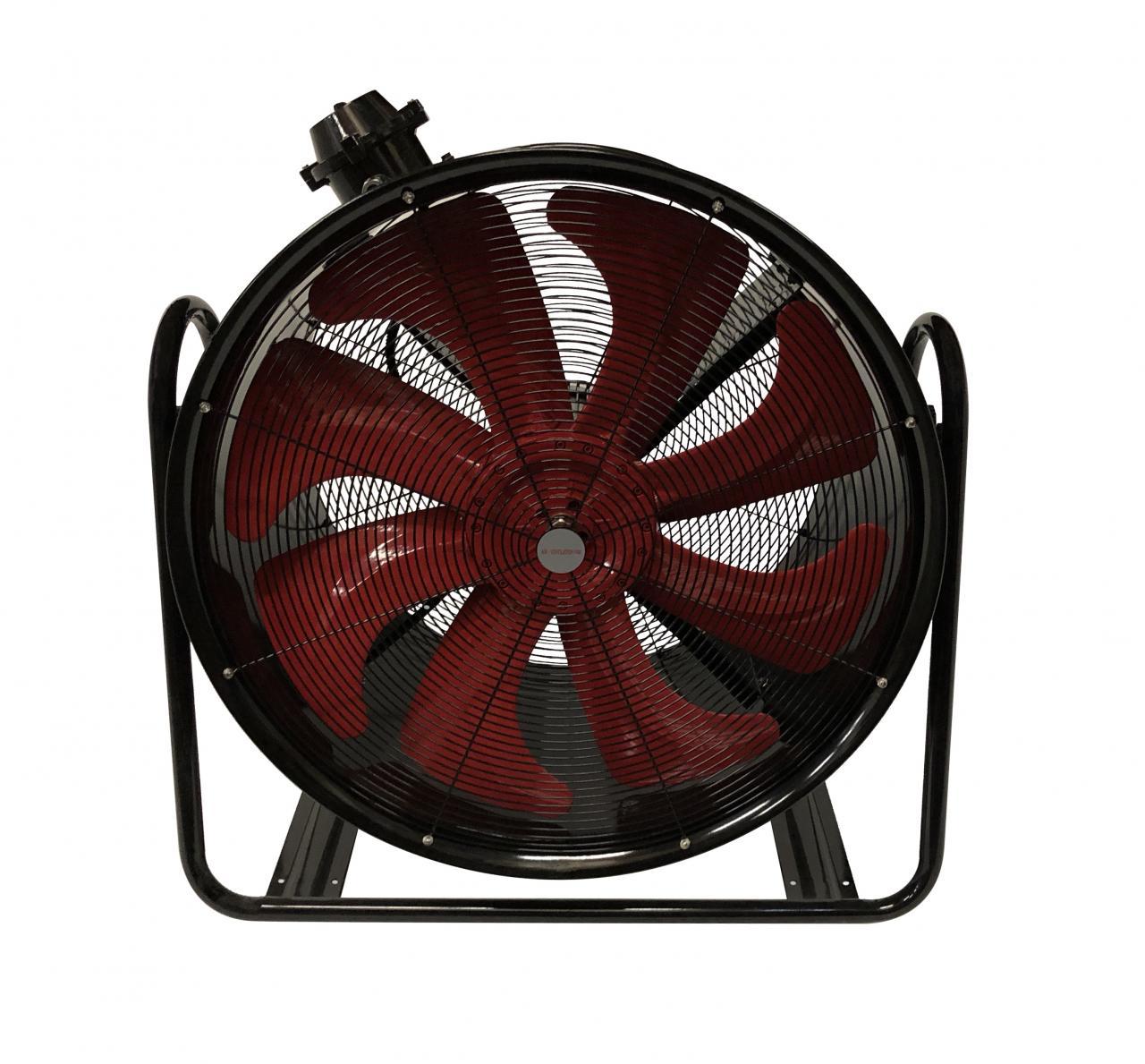
FAQs on Class 1 Division 2 Fans
How is a Class 1 Division 2 fan different from a Class 1 Division 1 fan?
Class 1 Division 2 fans are certified for use in areas where flammable gases, vapors, or liquids are present under abnormal operating conditions, meaning that the hazardous material is contained in a closed system and would only be released due to accidental rupture or breakdown. On the other hand, Class 1 Division 1 fans are designed for environments where hazardous materials are present during normal operations, requiring the equipment to prevent ignition even under direct exposure to hazardous material.
Where are Class 1 Division 2 fans typically used?
Class 1 Division 2 fans are primarily utilized in spaces where hazardous materials are not likely to be exposed under normal operating conditions but may accidentally be present. Such environments could include pharmaceutical manufacturing facilities, petrochemical refineries, paint shops, or facilities where fuel is transferred from one container to another.
Can Class 1 Division 2 fans be used in explosive environments?
Yes, Class 1 Division 2 fans are suitable for use in certain explosive environments, specifically in areas classified as Class 1 Division 2. They are engineered to not become an ignition source in the case that flammable gases, vapors, or liquids are accidentally released. However, they are not intended for areas where hazardous conditions are continuously or frequently present, as defined by Class 1 Division 1 environments.
What kind of motor does a Class 1 Division 2 fan use?
A Class 1 Division 2 fan uses a specialized motor that is designed to minimize the risk of ignition in hazardous environments. The motors are typically enclosed and often have additional features such as explosion-proof enclosures or spark-resistant materials to ensure safe operation under the conditions specified for Class 1 Division 2 applications.
How can I determine the appropriate size and airflow for a Class 1 Division 2 fan?
Selecting the right size and airflow for a Class 1 Division 2 fan involves considering a variety of factors including the size of the area that requires ventilation, the specific hazardous materials present, the ambient temperature, and the required air changes per hour to maintain a safe environment. It is highly recommended to consult with safety engineers or use specialized software tools provided by fan manufacturers that consider these variables to recommend the most effective and efficient fan configuration for your particular needs.


























